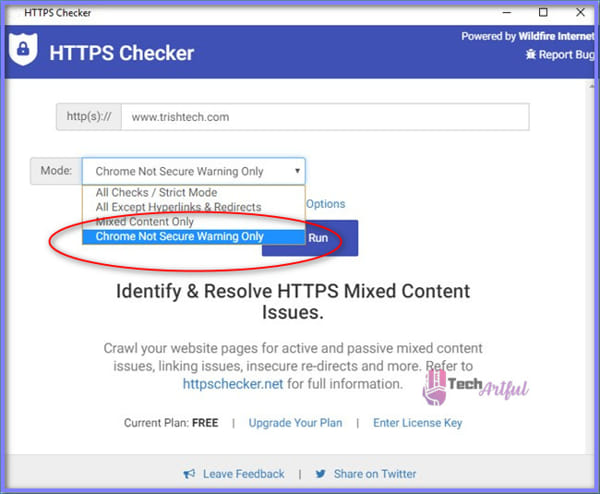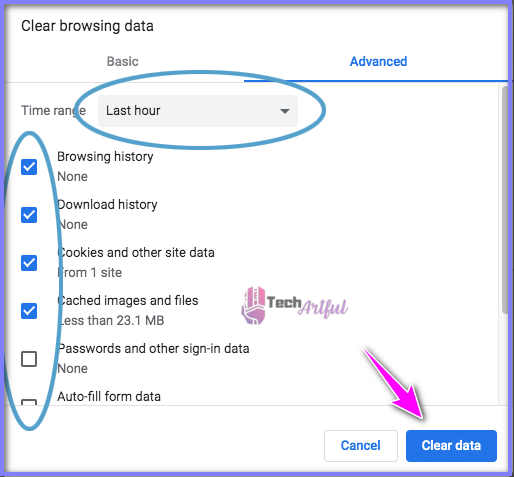Although it is unlikely, the following notice may appear on your computer screen when you download a file or application from the Chrome web browser.
When a file cannot be downloaded securely, the message This File Cannot Be Downloaded Securely shows on the screen.
If you see this error notice, it indicates that Chrome has assessed that the file is possibly malicious. A second possibility is that the website you are attempting to download the file failed to pass the security certificate verification procedure. The Chrome web browser will prevent you from downloading anything if it has the potential to expose your personal information or to install dangerous toolbars on your computer, and it will notify you if this is the case.
When it comes to HTTPS, Chrome is an exceptionally particular browser to use. If the web page from which you are attempting to download the file does not support the HTTPS protocol, the download will be refused, as assessed by Chrome, the download will be denied.
Many people have had this difficulty, and in this article, we will provide you with some quick and simple solutions to aid you in overcoming your challenges.
How to fix This File Cannot Be Downloaded Securely on Chrome
Downloading problems on chrome is often awful when you want to download an important file urgently. But you’ll be relieved after you go through this easy guide.
So, here are the steps to fix this file cannot be downloaded securely on Chrome:
1. Disable Unsafe Downloads In Chrome
Using the Chrome web browser, open a new tab and type in the address bar: chrome:/flags/#treat-unsafe-downloads-as-active-content in the address bar of your web browser. Disable Downloads that are not safe should be considered as active material.
To turn off the feature, choose it from the drop-down menu at the top of the page. However, keep in mind that this is a security measure intended to prevent the download of potentially hazardous objects from your computer.
You should take your time and carefully examine your alternatives before downloading anything new if you choose to turn off this feature. Alternatively, check to ensure that your antivirus program is up and functioning.
2. Check Any HTTPS Issues
About HTTPS, Chrome is quite strict about the types of content that it allows. Because Chrome does not allow users to download files from a page that does not utilize the HTTPS protocol, the download is terminated instantly when a user clicks on a link that does not use HTTPS. The user is taken back to their previous page, as seen below.
If an HTTPS version is available, you should use that instead of the non-secure version. If you don’t want to take the possibility of infecting your computer with viruses, you can choose not to proceed with the installation. Because the Keep option is selected, nothing changes in the current scenario.
The download of files from websites with valid SSL certificates placed on their servers will only be permitted by Chrome.
3. Install A VPN Chrome Extension
Installing a VPN plugin on your browser is also recommended if you want to avoid seeing the warning notice in your browser. Depending on the conditions of each user, this approach may or may not be successful for all of them.
It’s important to remember that, starting with Chrome 88, Google will automatically block all files that may represent a danger to users’ information security or privacy. Among the types of material that computers can read are executable files, pictures, videos, archives, and any other form of content that computers may read, such as text documents. Also, read how to fix discord stream no sound.
4. Disable Secure Browsing In Chrome
In some instances, it’s possible that deactivating Safe Browsing on your computer will prevent you from ever receiving the notification in the first place. You may quickly and stop safe browsing on your computer by following the procedures indicated below:
- Changes to your browser’s default settings may be made by selecting the Settings option from the Chrome navigation bar.
- Then, from the drop-down menu on the left-hand side of the screen, pick Privacy and Security from the list of options.
- If you go all the way down to the bottom of the page, you will find the privacy and security options for Chrome, which you may access.
- Make sure that No Protection is selected in the Safe Browsing section of the browser’s Safe Browsing configuration (not recommended).
- If the security alert has been successfully removed from your browser, you will be able to determine this by clicking on the Reload Chrome button.
5. Use A Different Browser To Download The File
You can use different third-party browsers to force download the files, but it is not recommended.
These files might have malicious content that can harm your device, so it’s better not to get in your device when Chrome is not allowing it or verifying it as a safe file.
6. Clear Browser History Cookies
In the cookies and cache data that is downloaded when traveling across several websites, it is conceivable that a potentially dangerous or defective piece of data is included there.
This might be one factor that contributes to the appearance of the error notice in the first place. For the sake of security, you may back up or export the information from your browser history and cookies from Chrome in preparation.
Here’s how to clear your browser’s cache and history:
- Find the three vertical dots in the upper right corner of the page and select one of them to open Google Chrome in a new window or tab.
- On the following page, you will be presented with many alternatives; select more tools from the drop-down menu and then choose to Erase browsing data from the sub-option list after clicking.
- Make a selection from the drop-down choices displayed as soon as the page loaded to indicate which options Google Chrome should remove. You may withdraw your browser history, download history, cached images and files (which may contain cookies and other site data), and cookies and other site data from your computer’s hard drive.
- Select the whole period from the drop-down list that appears in the text box that contains the time range.
- Then, when you have picked the things you wish to remove, select the clean data option and wait a few minutes for the process to be completed appropriately.
- When the procedure is completed, restart Google Chrome and attempt to restore your data once more.
- After deleting all of your browsing history, cookies, and cache data, you need to restart your computer to complete the process.
7. Run The Chrome Clean Up Tool
To clear your computer of any potentially hazardous files and solve the problem you are experiencing, you must follow the steps outlined in this method. Using this Google Chrome cleanup tool, you may resolve the Chrome will not download files problem caused by malware in the browser and can be resolved by running the software. The actions outlined below should be followed to resolve the issue:
- To access the Chrome settings menu, launch the browser and choose the three vertical dots in the upper right corner of the screen.
- There will be several options available when the program starts up; choose Settings from the list of possibilities displayed.
- You will find the advanced option at the very bottom of the settings screen if you go to the directions to the very bottom of the settings screen. Simply clicking on it will take you to the advanced options.
- The Clean Up Your Computer button, which can be found at the bottom of the page, is another option worth considering. The words discover hazardous software will appear in a box, and a blue box with the word Find written on it will appear on the same line as the terms discover harmful software.
8. Reset Google Chrome
You can also try and reset Google Chrome if none of the solutions above has worked so far. Follow these instructions below to reset Chrome:
- On your device, launch Google Chrome and surf the web.
- To access the settings menu, click on the three dots in the upper right corner of the page and then on settings from the resulting list of options.
- Select the advanced option on the last page.
- Scroll to the bottom of the advanced page and choose Reset and Cleanup.
- Select Restore settings to their original defaults from the drop-down option, followed by Reset settings to finish the procedure.
Resetting Google Chrome deletes your start page, pinned tabs, bookmarks, and other personal information. Additionally, the extension you installed will be removed, and all cookies will be erased temporarily. Passwords and browser history will also be lost in this situation.
Numerous problems also occur in various browsers, but you now have a remedy for them as well. Google Chrome is one of the best browsers available since it is used by many people from a variety of nations. Hopefully, the preceding methods will assist you in resolving the Google Chrome not downloading file issue.
FAQ
What is the Chrome download shortcut?
Open the Downloads folder in the Chrome OS browser window. Use the toolbar button or Alt + J.
How to enable downloads in Chrome?
Click Site Settings under the Privacy and Security section. Scroll down the options list to Automatic Download. Tap it. By default, the functionality asks for permission when a site downloads several files.



